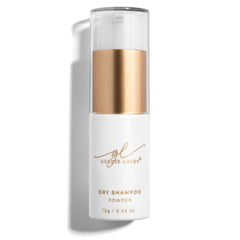Understanding Dandruff & Seborrheic Dermatitis
As stylists, we’re often the first to notice a shift in a client’s scalp flaking, itching, or that persistent irritation that just won’t go away. And while we may not wear a white coat, we do hold trusted space in the chair. That’s why it’s essential to understand conditions like dandruff and seborrheic dermatitis not to diagnose or treat, but to guide clients with care, accuracy, and integrity.
First, What Is Dandruff?
Dandruff is a common scalp condition affecting nearly 50% of adults worldwide. Its clinical name, pityriasis simplex capillitii, may sound complex, but the experience is universal: small, dry white or gray flakes that accumulate across the scalp often without redness or inflammation. This condition is linked to an overgrowth of a yeast-like fungus called Malassezia furfur (a natural resident of the scalp), which can disrupt the balance of the scalp’s microbiome when it multiplies beyond normal levels.
Then There’s Seborrheic Dermatitis
Seborrheic dermatitis shares many symptoms with dandruff flaking, itching, and discomfort but tends to show up with additional inflammation, often presenting as greasy, yellowish flakes and red, irritated skin. The flakes may extend beyond the scalp to areas like the brows, ears, or sides of the nose. This form of scalp imbalance is believed to be both a lipid overproduction issue and a response to microbial shifts in the skin’s barrier ecosystem.
So, What’s the Difference?
|
Condition |
Flake Appearance |
Inflammation |
Common Features |
|
Dandruff |
Dry, white/gray flakes in patches |
Typically absent |
Itchy scalp, no redness |
|
Seborrheic Dermatitis |
Greasy, yellow flakes |
Often present |
Redness, irritation, sometimes extended beyond scalp |
While the relationship between the two is still debated in the clinical world, dermatologists often refer to dandruff as a milder, non-inflammatory form of seborrheic dermatitis. But what matters most for us is knowing how to recognize the signs and speak about them responsibly.
A Word on Regulations & Why We Don’t “Treat” Dandruff
Here’s what every professional needs to remember: in the U.S., any product that claims to cure, treat, or prevent a medical condition like dandruff or seborrheic dermatitis must be registered as an over-the-counter (OTC) drug or approved by the FDA. That’s why you'll never see us promise to “stop dandruff” or “cure dermatitis.”
Instead, what we offer are supportive, carefully curated solutions designed to nurture a healthy scalp environment because a balanced scalp is often the first step toward visible improvement.
What Can You Do as a Stylist?
Start the conversation. Your trained eye may notice changes your client hasn’t, but always lead with curiosity and professionalism. If your client is experiencing intense flaking, irritation, or discomfort, recommend they speak with a board-certified dermatologist for diagnosis.
In the meantime, support the scalp with targeted care:
-
Goldie Locks® Clarifying Shampoo
A deep, refreshing cleanse that gently removes excess buildup and impurities especially useful when the scalp microbiome may be out of sync. -
Goldie Locks® Scalp Serum
A calming, daily-use topical formula featuring Probiotics, Red Clover Extract, and a natural alternative to retinol to help balance the scalp’s surface environment. While not a treatment, it’s a trusted first step in a scalp-resetting ritual.
We don’t claim to treat scalp conditions but we do believe in working with the scalp, not against it. Think of our Scalp Serum and Clarifying Shampoo as the foundation for a healthy ecosystem: when the environment thrives, everything built on it (including great hair) performs better.
So if your client’s struggling with flakes or irritation, you can confidently say:
"While this isn’t a prescription, it’s a smart place to start."























